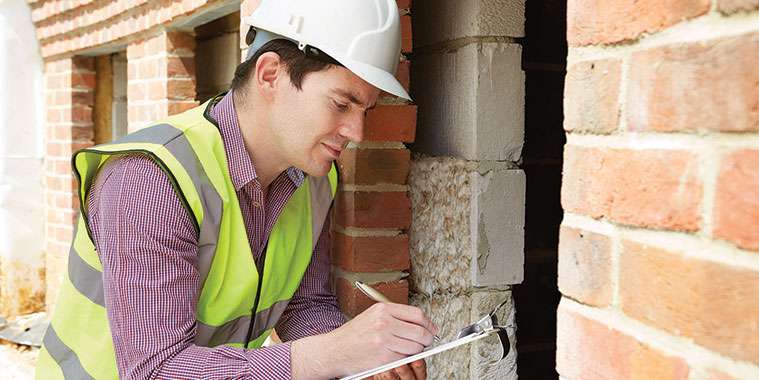By Connie Adair
Infrared thermography, 3D tours, floor plans and maintenance checks even if you’re not moving — home inspections have changed a lot in the last decade. And now like everyone in this COVID-19 world, home inspectors are doing their part to keep everyone safe while conducting their inspections.
Home inspection is a personal endeavour that you can’t do virtually, says Dan Steward, president and CEO of Pillar To Post. But he says they’ve gone from high to low touch. In the pre-COVID-19 world, Pillar To Post inspectors welcomed, and sometimes had entire families – parents, in-laws and siblings – along for the inspection. Afterwards the inspectors would print the report and go over it with the clients on site.
Now, along with masks, shoe coverings and gloves, and wiping down equipment before it enters and leaves a house, safety includes limiting those in attendance for the inspection to two people plus the buyer’s agent.
Steward says agents have done a good job with standards and procedures to keep their clients, themselves and others safe, and Pillar To Post does the same.
Inspectors undergo daily temperature checks and they ensure no one in the seller’s household is under a 14-day quarantine period. The seller is asked to turn on the lights and open doors, creating as touch less an experience as possible. Physical distancing is practiced.
The home inspection includes a visual check of the exterior, interior and major systems.
Infrared thermometry is used to detect temperature differences that could indicate, for example, wiring issues.
The client receives a hard copy of the home inspection report in a binder to keep as an easy reference guide. “People are counting on the inspection to know the good, bad and ugly,” Steward says.
A summary is followed by a 20 to 40-page report with lots of photos.
For those who don’t want to attend the inspection, the report is prepared and the inspector sets up a Zoom meeting to go over the details.
Pillar To Post rolled out 360-degree photography and virtual tours prior to COVID-19. “The change in conveyance of information is inspired by COVID and technology,” Steward says.
The 26-year-old company has inspectors of all ages. Some older inspectors, and those with health conditions, have felt uneasy and only do inspections when no one is present. It’s the same for clients. Some don’t want to be there, and that’s okay, Steward says.
Inspectors don’t usually see the sellers, but now leave a note about what safety measures were taken while inspectors were in their house, Steward says.
Home inspection has always had safety issues – inspectors are up on ladders and working with electrical equipment. COVID-19 is an invisible risk. “We’re working hard at not getting complacent,” he says.
Homeowners’ and agents’ feedback shows that customers value the extra precautions being taken. That feedback is shared with inspectors, so they know their measures are appreciated.
In a hot market like 2017, some buyers may have skipped a home inspection, but overall, people know the value of an inspection and feel the knowledge is important.
Some sellers, whose strategy is to sell as quickly as possible, are choosing to have a pre-listing inspection. “It’s a great idea. It adds a level of transparency to the transaction,” says Steward.
Having a pre-listing inspection can also help when determining the property’s list price. For example, says Steward, “Say the furnace is 15-years-old and the life of a furnace is 15 years, so it may have to be replaced soon. The seller can go in saying they know that and take $3,000 off the price in consideration for that, versus a buyer finding out themselves and wanting $10,000 off.”
More homeowners are choosing to do a maintenance inspections and environmental inspections even if they are not moving, he says.
“There may be the arrival of a new baby or parents moving in and they want to know if there is mould, or about the air quality. There is more interest in owning a home than ever before.”
Steward says knowing the condition of various systems also lets homeowners be proactive rather than waiting until something breaks down.
Pillar To Post, founded in 1994, continues to grow despite the current pandemic.
Steward says it currently has 80 offices in Canada but needs 30 more in Greater Toronto and Hamilton area alone.
“As real estate changes, consumers want more – they want to know about water quality, mould, septic, the condition of a fireplace and if it’s venting properly…we’ve come a long way from inspections 10 years ago,” he says.
Home inspections start at $500. For more information and to view a “what to expect” video, visit www.pillartopost.com
— REM



